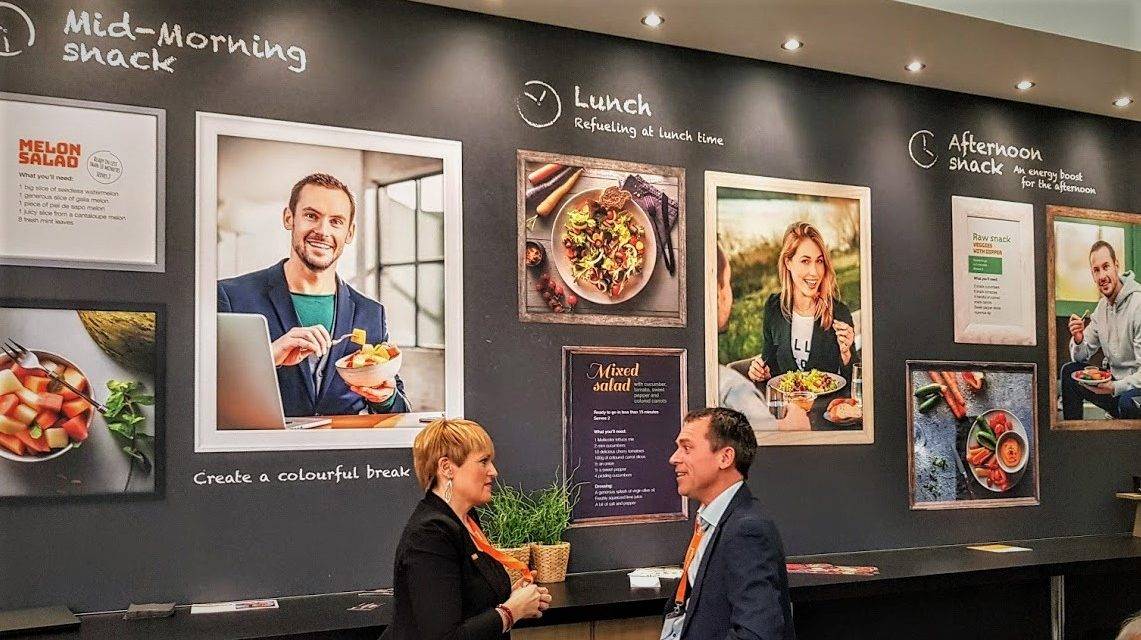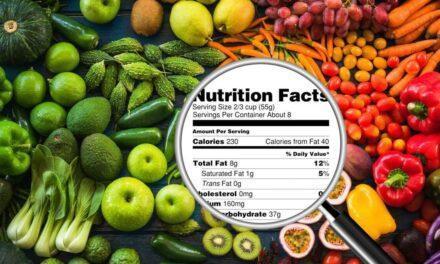The new horticultural industry will need postharvest experts. These technicians will be people who like process innovation and have bold insights for new business. Are there opportunities in another R+D+i for a horticultural industry –fruit and vegetable industry-covering from “field to fork”?
In this vision for the horticultural industry 2030, store formats are proposed “in vertical”. They are theme stores with global or local business plans, stores organized by producers’ organizations (POs) or producers’ associations. Such distribution formats are designed to bring fruits and vegetables from the field to the table.
Another proposal is to look at the kitchen. To develop an imaginary Postharvest 4.0 plenty of gastronomical knowledge, creating, preparing and selling menus. To achieve this, every producers’ organization can carry out its projects from a laboratory – a workshop or kitchen where to research and create offers of their fruits or vegetables in all its different presentations.
Postharvest 4.0
QUESTIONS
OPINIÓN
Business opportunities are continually popping up in the horticultural industry. Those opportunities are present at field and greenhouse level with the intensification of cultivation, in the robotization of production systems, in produce diversification in fruits and vegetables. In fresh food distribution and trade, the key is to be found in the postharvest and food industry. In the challenges of modern food.
Into which innovation path will the postharvest professions head for? Do people really want to eat healthy, or is it just a trend? The new postharvest will be very technological, no doubt of it. But, will their areas of activity, from the supplier’s warehouse to the consumer’s table significantly increase?
In the professions related to fruit and vegetable growing and trade, diversification is surely one of the keys to progress. Diversity of fruit types and varieties, disemination of postharvest knowledge, in the business models of producer organizations; diversity of store formats or food service chains and diversity in consumption trends for more vegetables and less meat. The horticultural industry is having a winning streak. Consumers want more veggie food.
Postharvest, what for?
Why is postharvest so extremely useful today? To reduce food waste, in the first place. To improve packaging and to increase produce value for the supply chain. Besides, through its processes, postharvest contributes effectively to food safety and traceability from grower’s field to point of sale. “Fresh for longer” is a key concept in postharvest today.
Nowadays, a modern postharvest system in place for the fruit and vegetables growers is extremely necessary for the efficient business development of the wholesale trade and supermarket chains. Postharvest is also effective in establishing chain traceability step by step between growers and retailers and also for a certified food safety along the trading process.
What do postharvest industrial companies do?
Companies in the postharvest industrial field are concerned with refrigeration, preserving quality and avoiding fruit physiopathies. They work with Controlled Atmosphere for the storage of fruits, design efficient transportation and logistic systems and are involved in packaging. Most recently, in sustainable packaging.
New sustainable solutions for packaging, using plastics or other materials, are being developed by the packaging industry. Sustainable packaging aims to fulfill the so called “three R’s”: recycle, reduce and reuse. Although new plastics or flexible paper as packaging materials will not be abandoned.
Today labelling can be taylor made. From the field to the point of sale. In our century, digital printing is ubiquitous. Printers for everything are available: printing a human bone in an operating room or a cake in the restaurant.
Professor Kader, in his postharvest courses at the University of California – Davis, in the early 2000s, invited his students to identify good field practices as a way to keep produce quality along the value chain, right down to the points of sale.
Kader indicated the following areas of knowledge as relevant for postharvest in the future:
– A reviewed statistical science.
– Broadly disseminated postharvest knowledge and practice.
– Modern horticulture is knowledge. Reduced use of inputs and improved environmental and resource conservation.
– Tested quality. Development of better sensors and other practical and economic gadgets.
– Highlighted and enhanced taste of fruits and vegetables.
– Controlled produce respiration. Use of Controlled Atmospheres and 1-Methylcyclopropene.
– Fruit rot. Integrated postharvest management.
– Combat of food contamination; water disinfection in fruit and vegetable packaging plants.
– Use of cooling/freezing for conservation.
– Promoted value. Low prices are the ruin of the producers
– Inexpensive packaging. Flexible materials, brand relevance, information conveying.
– Identification of healthy properties and composition of fruits and vegetables.
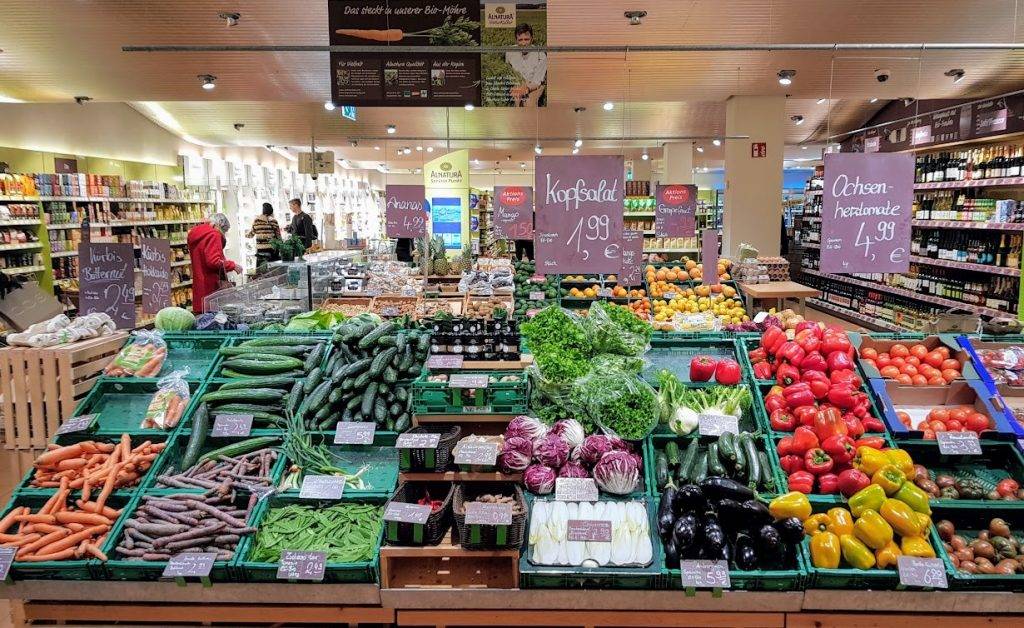
«Today, postharvest is most important for the effective management of the organized distribution
Postharvest will evolve from the concept of “whole product” to that of minimally processed produce – clean, cut, washed and the ready-to-eat»
Nowadays postharvest technicians are working on all those areas. Kader was right in his predictions about the relevant fields of study in the postharvest fruit and vegetable sector. The academic postharvest courses at the Polytechnic University of Valencia and at the University of Cartagena in Spain deal with most of these subjects.
Presently there is also a keen interest in projects about circular economy. How do you create new materials or ingredients from postharvest waste of vegetables and fruits? How do you clean and or/ reuse waste water from the food industry? The legislative agenda contains these and similar issues.
Traders and distributors pose requests to postharvest specialists. Growers follow those requests, formulated at the points of sale. Large retailers and supermarket chains convey those requests to the packaging plants and warehouses close to the growers.
How will the postharvest look like in 2030?
Is it possible to add a new twist to the vision we have today about postharvest? Is it a postharvest 4.0 waiting to be developed? How will the postharvest look like in 2030?
Since quite a few years, modern food innovation has identified consumer’s wishes as the source of information needed to achieve success. To supply whatever the consumer wants. But does the consumer know what he wants? Or does he plainly accept the industry’s proposals? The food industries coming on top are those that know what consumers need.
Vegetable growers are right when they demand better prices and more value for their produce. But, how to achieve that? “If you’re looking for a different outcome, do not keep doing the same thing”, says a quote attributed to Albert Einstein.
Then, how can the income of food producers be improved?
Some say that the right way is to put pressure on the public administration. Making through demonstrations clear to society that their demands are loaded with reasons. Like the preservation of the socioeconomic tissue in rural areas, avoiding their depopulation or because the belief in the advantages of the common welfare.

Growers and family businesses are stuck in crisis. Meanwhile, the producer organizations are learning what to do and what to say. Both, locally and globally. In the future, the producer organizations should keep an eye on the income of their members. Does this represent an opportunity for the “Postharvest 4.0”?
Others believe that better prices for growers will be obtained improving strategy in the negotiations with wholesalers, large distribution and supermarket chains. They sustain that the best option is to change from a customer-supplier relationship to a partnership, creating collaborative trade rules.
For a start, fruit and vegetable growers have a competitive advantage in the supply chain reaching from field to table. They are the owners of the produce. The other actors in the value chain are “service companies” or food processing industries.
Nevertheless, there is only one possible answer to the challenges faced by the agri-food industry: “innovation”. It is impressive the pace of innovation to be witnessed in greenhouses and vegetable fields. Among other surprising technologies we find vertical indoor factories used to grow vegetables. And modern food brands do not sell vegetables but “gastronomy”.
To innovate
Believing in innovation from the production field onwards is a measure of economic progress. Today’s horticultural producers are great innovators in their production systems and in the kind of plants they grow.
All kinds of growers’ organizations, under different associative forms, are possible vehicles of innovation in postharvest technology. They can evolve from classic innovation of business models – presently in place – or experiment and innovate with new systems. The organizations of fruit and vegetable growers are able to create their own “postharvest 4.0”.
Today, postharvest works in “fresh – for – longer” for the the traditional trade and the large distribution systems. The question is: Would postharvest 4.0 switch its attention to economic activities closer to the consumer, known under the name “from field to fork”?
Postharvest 4.0 will be around sooner than later. Innovation that addresses the demand for more vegetables and less meat is an opportunity for the global horticultural industry. Will postharvest 4.0 open new business opportunities and provide new products to the present horticultural industry?
New business models will show up in that horticultural industry by 2030. Many of them radically different from the usual ones of today. How will the new activities of the industry look like by that year?
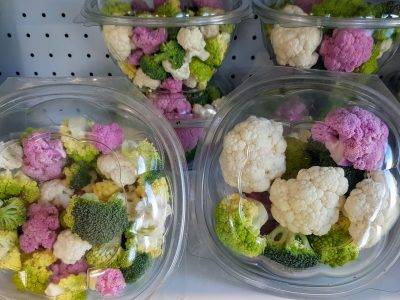
Fruit and vegetable stores will display more produce shapes, colors, tastes. Based on the different plant varieties offered by the growers
Different scenarios can be established adjusting the new visions of the horticultural industry. As an example, producer organizations manufacture “new food formats“, improving their “supply” catalogue. Starting from whole fruit or vegetables they can expand their catalogue to “processed food“. As a result of that enlarged availability, stores can manage to expand the vegetable or fruit shelves with “specialties” based on a broad supply of different produce varieties.
Postharvest sells services to stores, the conditioning of produce and also sells time for consumers, says Francisco Artés, teaching the postharvest courses at the Polytechnic University of Cartagena. According to survey results, people prefer healthy foods. Some add that they want to prepare their ingredients in easy, hygienic, convenient and quick ways. Menus with more vegetables and less protein will also be a more frequent gastronomic experience in the immediate future.
Another possible scenario, worth of thinking about is whether producer organizations will group together with other companies in business projects for “new distribution and sales systems” in fruit and vegetables. Will the new food distribution formats appear locally or with shared platforms in other countries or regions? Will they integrate vertically, like franchises?
The scenario, preferred by traditional farmers – not for 2030 but today – is a price restructure resulting in price rises for the growers. Wholesalers and supermarkets should reduce their margins and allow price improvements for the primary sector. As a consequence the distribution channel would pay more money to the growers for their fruits or vegetables.
I do not think this will happen. In the future the producers, associated at the primary level, will have to do more to improve their income. Their organizations will have to be more active. In 2030, every growers’ association will need a clear vision about where it wants to go.

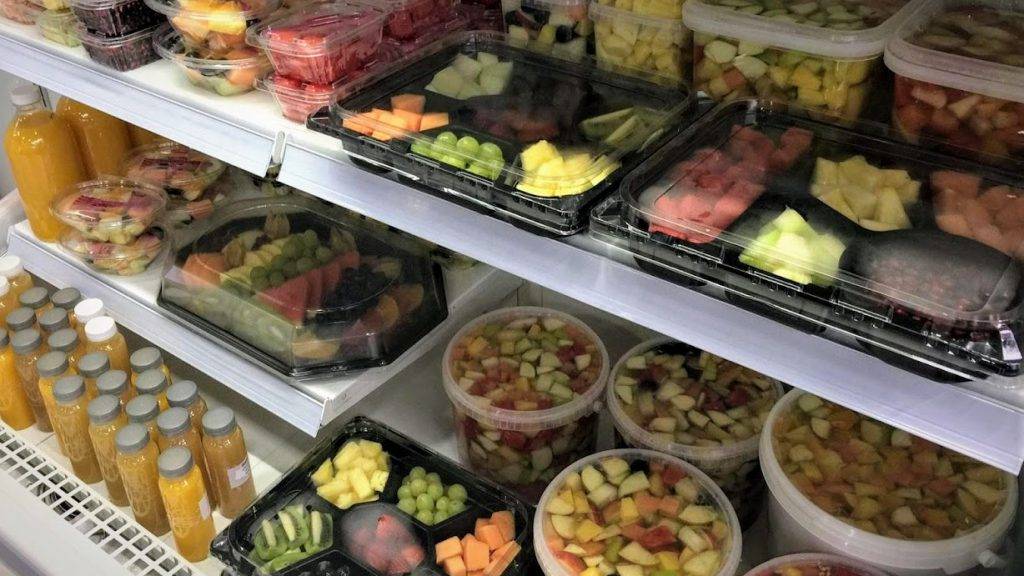
The Italian company DimmiDiSi – DiqueSi in Spain, “say yes”- has been very successful with a broad line of salads, vegetable creams and soups. Fruits and vegetables offer many opportunities for local outlets
;

Research + development + innovation (I + D + i in Spanish) at the labor- kitchen of a producer’s organization is not handicraft, is industry. An industry learning, very often, from the regional handicraft.
“Pappels” are healthy foods for children: lettuce leaves take the place of bread; fennel leftovers are used as raw material for the make-up industry.
Fruit and vegetable brands create offer across the board. “Pink Lady” in apples, “Dole” and “Del Monte” in pineapple, “Montosa” en avocado or “Bonduelle” in vegetables

Producers’ organizations
While modernizing with the aim of improving the income of their members, producers’ organizations must be bold and expand their business activities; locally and globally.
Producers’ organizations should move in the direction of postharvest 4.0. This would mean new activities within their structure, with more skilled jobs in the horticultural industry. This means starting or participating in research and development activities, adapted to their needs and dedicated exclusively to those organizations.
Producers can group together in more ways than is currently the case, manufacturing packaging materials and other inputs for their own use, for example. Manufacturing innovative presentations for their produce and creating also innovative business models throughout the supply structures, including specialized shops and food service chains.
Regarding the present food distribution, postharvest will evolve from working with “whole produce units” to minimally processed – clean, cut, washed – presentations. Even “ready-to-eat” presentations in some cases. Presently, sales growth for fresh cut vegetables is still large.
The postharvest sector will also carry out projects regarding ingredients for fast food or cooked-dishes. These are alternatives: “ready-to-eat” courses or prepared ingredients for menus distributed by retailers and food services.
Will there be the same distribution channels for processed foods in 2030 as there are today? There will also be new ones, such as online sales and innovative formats for retailers, shops and/or foodservice chains.
Postharvest and gastronomy
What can be done at producers’ organizations to learn more about innovation coming from the field? Innovation from the field originates in plant breeding of both fruit and vegetables. The proposal of the editor of this article is to introduce the postharvest professionals to gastronomic activities. The reader should understand what I mean. New vegetables have to be cooked, new recipes created, the produce eaten, tasted and evaluated from the point of view of the customer. All this must be done by growers collaborating with specialists of the modern postharvest 4.0.
Innovating in food also means creating taste sensations in the kitchen, at the table or for “on the go” meals. The proposal is to innovate from your own kitchen. A kitchen located in the producers’ organization itself. Postharvest 4.0 should have a lab, a workshop, a gastronomic R&D&I center, a kitchen. All in one.
Who is to be found in the innovation workshop – the laboratory – of a fruit and vegetable growers’ organization? A cook, an agronomist or a PhD degree holder in agronomy with a vocation to create his/her own R+D+i project(s) looking at gastronomic interests of his clients. That technician or the new food research group working within the organization creates its innovation projects aiming to process the vegetables grown by the producers of that organization itself and/or celebrating agreements with other agri-food organizations. All is about making proposals, about collaborating to improve the supply of some fruits and vegetables. It is about creating value for the customers.
Spanish horticulture in Europe
There is a lot room for new ideas in the horticultural industry of 2030. Organizing again, based on production and knowledge. To finance postharvest 4.0, even to make a mistake, we already have a successful horticulture. The present one shows low prices and larger amounts of production in the fields. It is the largest European horticulture measured in kilograms of produce, in truckloads. And always working with low prices.
Low prices signify the ruin of some growers and fruit and vegetables in bulk on the shelves of the shops represent food safety risks. Risks for which the only accountable people should be those shopkeepers working under such conditions.
The legislator and the municipalities are responsible for the lack of hygiene in fruit shops and the lack of good practice in handling bulk food. The fruit and vegetable section of a shop should have the same image of hygiene as a pharmacy, an ice-cream parlor or at least the same cleanliness and order standards as observed by industry leaders. The “Mercadona” supermarket chain, for instance.
The Spanish horticultural industry has the largest market share in Europe. And in Spain accounts for 55% of the country’s final vegetable production value. Twenty-eight million tons are grown on 800,000 hectares. Exports bring 12.832 million euros income for the Spanish produce’s organizations.
Regarding world exports of fruit and vegetables, Spain holds the first place of food exports in this category, with a market share of 10% of the total, followed by Mexico and China. Spanish producers’ organizations should keep this leadership position within the preferences of European consumers.
The consultant Francisco Borrás says that the main advantage of the Spanish as fruit exporters is that it is a country of growers where per capita consumption of fruit and vegetables amounts to 250 kilograms per person and per year. Spanish households buy twice as much fresh fruit and vegetables than German families.
Regarding the future, the Spanish horticultural industry is very good placed. Consumers want “healthy food”: to eat less meat and more vegetables.
Nowadays, the Spanish produces’ organizations are present in all European markets.
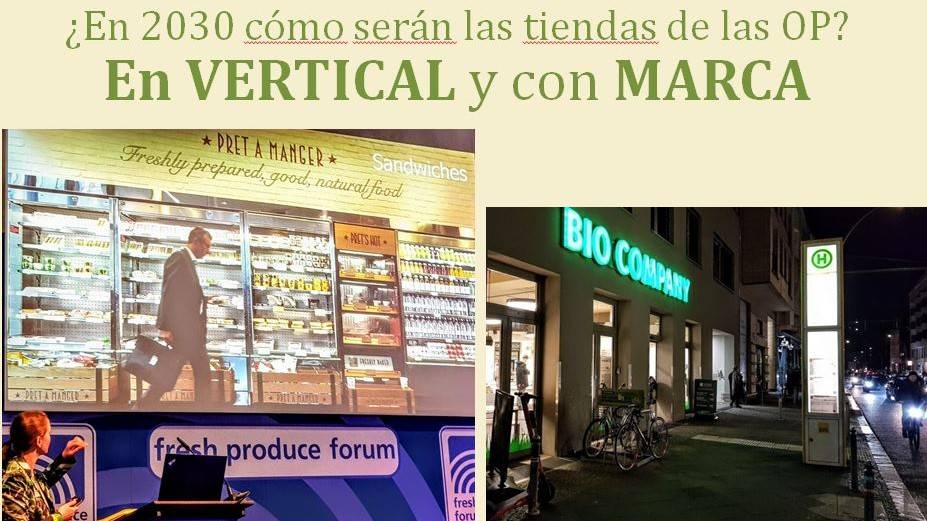

A slide included in a talk by the expert Bauke van Lenteren (Rijk Zwaan), showing a shop with a wonderful supply of prepared, natural food, states: “Pret a manger”. You can add “regional”, also a charming word. Many shop models can be planned as new businesses. On the sign of the “Bio Company” chain, with the sights on 2030, we could also read: “Mediterranean Foods”
The foodservice establishment “Eat Real Honest Greens” in Barcelona; is another example of “new business” with the vegetable as the protagonist. Customers walk to the counter with their menu of choice ready and decide for “market plates or garden bowls” -both prepared mostly with fruit and vegetables. The courses are prepared on the spot, like in the most popular hamburger restaurant, but the options are of “Healthy Food”
The vertical store
How can new business models for the Spanish producers’ organizations look like?
Vertically integrated stores are a possibility. Many agri-food producers wish to have direct contact with their consumers, without middlemen. Some large organizations have the business volume and financial capacity to carry out “from farm to fork” projects.
The Spanish producers’ cooperative “Guissona” brings its beef directly to the consumers’ table. The members of this cooperative, originally farmers, produce the concentrate for their animals, fatten them up and sell the meat through their own shops, the “BonÁrea” establishments. And recently they have started also an on-line sales channel.
Chains of jointly organized fruit stores, food services under a common brand or combinations of both approaches are also possible as an innovation. Or vertical integration around a theme, as bakeries already do. There are many examples available in the bakery branch: “Granier” and “Panaria” are well known trade marks in Spain, for instance. “Starbucks” does something similar with coffee.
How will the vegetable and fruit shops look like in in 2030?
In a report about ten possible new ways to organize fruit and vegetable stores, published in 2011, following a presentation by Ulrich Eggert, a consultant from Cologne, different and very imaginative store models are explained. One of his examples was named “vertical store” and “thematic store”, describing a kind of “food nation. Including a restaurant and bar with menus and catalogues of regional foods and dishes. A similar example of such a “vertical” experience could be called “Mediterranean Diet.”
Using the imagination to design store models to promote sales of fruit and vegetables as opposed to the triumphant model of today’s supermarket, many words poo-up to describe such models – or hybridization of different ideas. Words such as “rural”, “urbanites with a regional taste”, the “food pick”, “fruit or salad bar”, “exotics”, “your traditional fruit and vegetable store”, “the pharmacies”, “the RFID discount” – this one with radio frequency identification of produce, eliminating queues and waiting. New supermarkets and vertically integrated stores.
In Catalonia you can find themed store models selling fruit and vegetable category: the “Ametller Origen”, the “SuperVerd” or “Cal Fruitós”; and “Frutas Zelaia” in the Basque Country.
Some stores are called “flagship stores”, they are places to recreate sales experiences. These stores incorporate training and transmit brand image. In retailing, multi-channel is already here. Fruit and vegetable growers -and their organizations- can take part in re-shaping food stores. It is an interesting option. The new “points of sale” provide the customers with new experiences while buying.
Is it possible for those grower organizations to reshape themselves introducing this model of the “flagship store”, creating lines of thematic research and development for “their fruit” or “their vegetables”?

Knowledge and training are the focus of the “trials” at the Rijk Zwaan Retail Center in Berlin or at a fruit shop with cardboard boxes at the Smurfit Kappa in Alicante. Start testing from each producer organization along the value chain is one of the options for Postharvest 4.0
The “Nestlé” store in Esplugues del Llobregat in Barcelona is open to the public and the seed company Rijk Zwaan in Berlin has a meeting point – a networking place – for discussion among vegetable growers and the managers of the veggie category of supermarket brands and professional gourmets. This late is called “Rijk Zwaan Retail Center”.
The seed company Fitó collaborates in the “Cocina de Huercasa – Huercasa kitchen“. The cardboard manufacturers of the Smurfit Kappa brand have a “test” shop in Alicante to display their packaging systems for logistics and as displays for the points of sale.
Huge “food nation” ideas are the FICO theme park in Bologna and the Eataly World brand of shops. It is possible to hybridize ideas for “mediterranean foods”: vertical stores with vegetables, olive oil, spices, nuts, wine, tiger nut or almond milk, or even strong drinks such as kim kombucha …
Vision 2030
To develop and implement such visions of new business will require to involve postharvest experts. Those experts will be people who like process innovation and show boldness and taste for new challenges. Are there opportunities creating a new R&D for a horticultural industry, from farm to fork?
The issues posed by the 2030 horticulture are better answered if the opportunities offered by shared projects are analyzed.
The ways of the “collaborative economy” – sharing of resources among different participants – could be very useful in vertical integration and for the coordination of the production of the V and VI stages of fresh cut by fruit and vegetables. Telecommuting will take an important position in the creation of digital catalogues and smart phone applications to be used by vegetable suppliers and the on-line trade.
Two proposals can be summarized at the end of this article. The first one is to take a look to the kitchen from the growers’ organizations. The second one is to widen the business models in the value chain of fruit and vegetables. Create organizations to provide the multiple services needed to bring the produce from the fields to the consumer´s fridges and dishes.
“To look to the kitchen” means to develop “Postharvest 4.0”, using gastronomic know-how to create menus, to manufacture them, to sell them. For the brands, to count on catalogues for all the presentation stages of fruit and vegetables. Following the example of “Bonduelle”, producers’ organizations can supply the complete range of presentations. Fresh cut, ready to eat, whatever. Like “Dole” and “Del Monte” in pineapple, growers’ organizations will take the lead in innovation to promote the consumption of fruit and vegetables across the whole range of presentations.
Meaning of the terms used by the author
GDO (“gran distribución organizada”), organized large scale distribution, inclusive concept for supermarket retail brands, discount, hypermarket, food service chains, …
OPs (“organizaciones de productores”) and OPFHs (“organizaciones de productores de fruta y hortaliza”): “Producers’ organizations” and “fruit and vegetable producers’ organizations” are terms coined by European legislation.
POSTHARVEST 4.0 is a term used by the author to describe a development in which professionals will base and contribute with their experiences for the fruit and vegetable trade on innovation from the field to the table. Unlike traditional postharvest, focusing from field to the lorry and then to a bulk trade warehouse in the GDO, Postharvest 4.0 proposes to also add the gastronomic stage to the offer of the producers’ organizations.
Informaciones relacionadas

